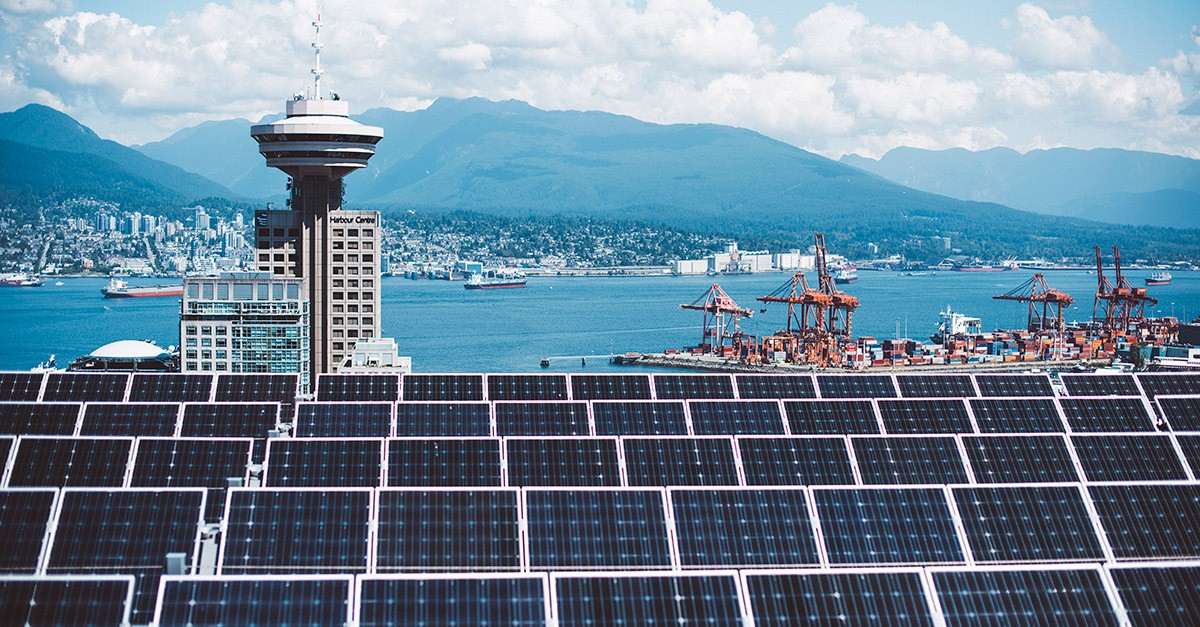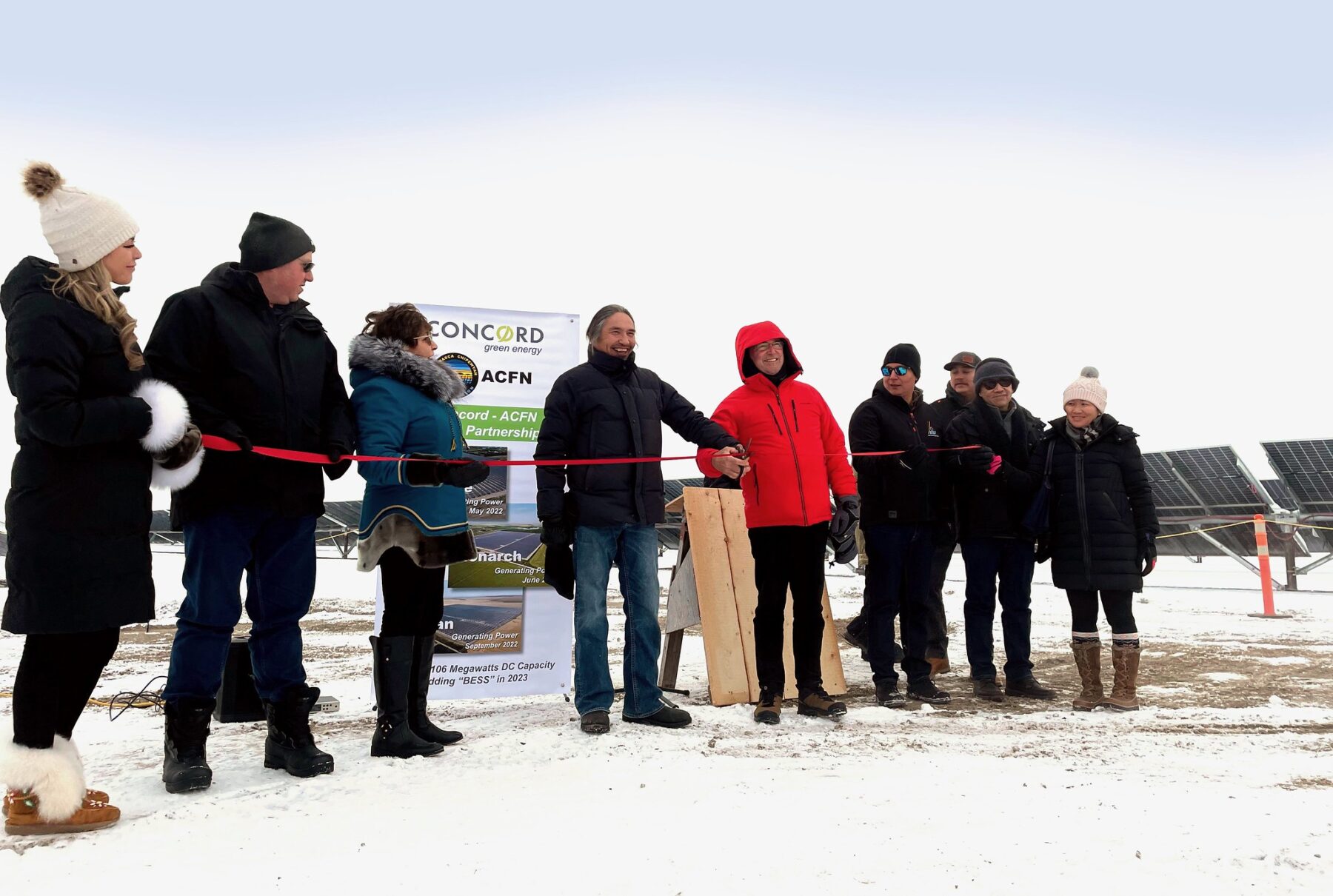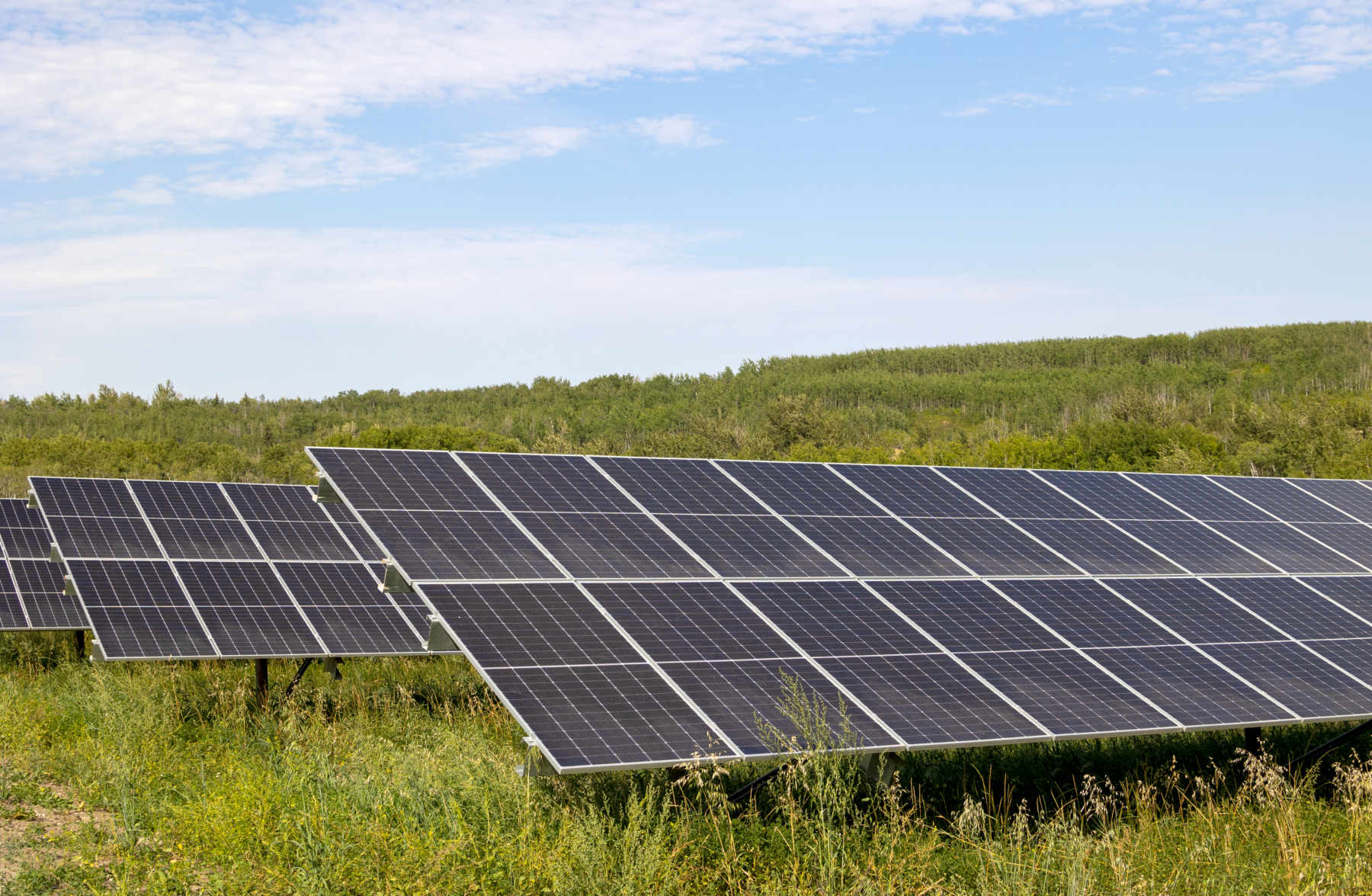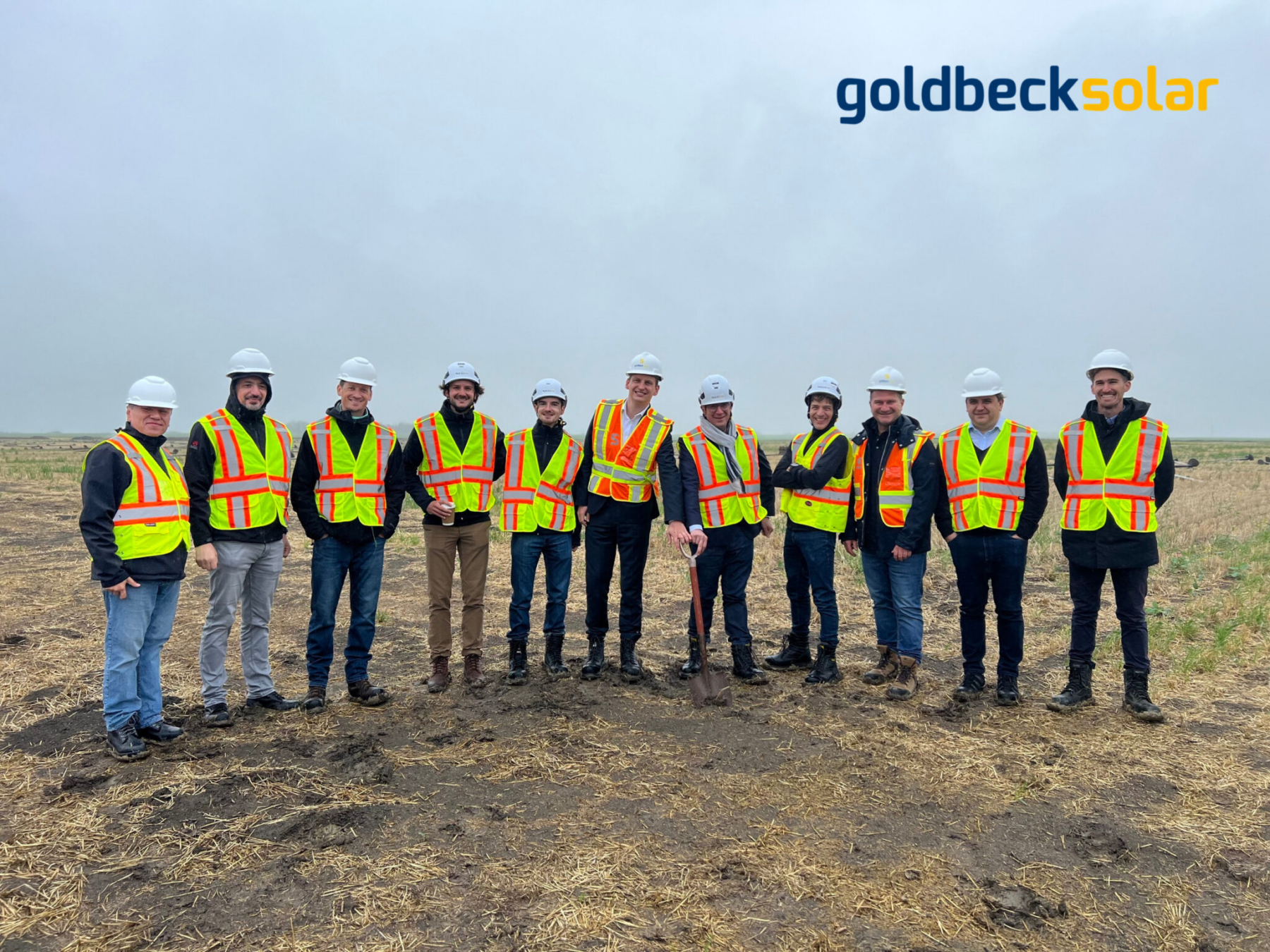Shine bright: 11 solar projects powering the energy transition
These clean energy projects are helping communities and businesses build a greener future.

Solar panels soak up some rays in downtown Vancouver. – City of Vancouver
The future looks bright for Canadian solar projects.
Just this month, federal officials announced $160-million in funding for Alberta solar projects. Zooming out, Canada’s federal government has outlined a six-year investment tax credit that puts a 30% tax credit in place for solar, wind and energy storage projects deployed through March 2034.
On the ground, this means remote Indigenous communities and power plants can transition off fossil fuels, businesses can make their operations more green and the nation can expand its power capacity without further contributing to the global climate crisis.
Here are some projects that highlighting what the power of the sun can do.
Travers Solar

Let’s start the list off with a bang. The massive Travers Solar Project began development in 2017 and it started operations late last year. It includes approximately 1.3 million bifacial solar PV modules on 3,330 acres of land in Alberta’s Vulcan County. It was funded by Greengate Power Corporation and Copenhagen Infrastructure Partners (CIP). CIP sold all of its stake in the project to Axium Infrastructure in Canada earlier this year for an undisclosed sum. According to the project’s builder, PCL, Travers Solar incorporates a tracking system with steel helical piles that rotate the solar panels to follow the sun’s path as the day progresses from dawn to dusk.
Mytilineos projects

This one comes as a bundle. Greek industrial and power company Mytilineos Energy and Metals recently announced plans to embark on a $1.7-billion project to build five solar energy plants throughout central and southern Alberta. The company stated that the province is easily Canada’s leader in solar energy. Mytilineos says its plants will generate 2.1 terawatt-hours (TWh) per year of renewable energy, enough to power 200,000 Canadian homes for a year. The plants are Georgetown, in Vulcan County; Sunnynook, in Special Area No. 2; Dolcy, in the Municipal District of Wainwright; Eastervale, in the Municipal District of Provost; and Red Willow, in Stettler County No. 6.
Lathom Solar

Lathom Solar (the Project) began development in 2017 and includes close to 1,000 acres of land located approximately 15 kilometres southeast of the Town of Bassano, in the County of Newell. The project will be 120 megawatts (MWac) in size. In 2021, Amazon announced they have entered into a long-term power purchase agreement for 80 MW of capacity from the site. According to the project’s owner, Greengate, construction could begin sometime this year. The estimated project cost is $170 million.
ACFN-Concord Solar Partnership

The Coaldale, Monarch and Vulcan solar farms in Southern Alberta went into service last year after receiving traditional Indigenous blessings and a ceremony. The projects are part of a $145-million partnership between Concord Pacific and Athabasca Chipewyan First Nation (ACFN). The projects are expected to deliver 150-gigawatt hours (GWh) a year to the Alberta power grid and capture about 26 GWh of electricity annually once the 2023 battery storage component has completed construction.
Nunavut projects

Communities and projects in Nunavut (Arctic Bay, Clyde River, Pond Inlet, Whale Cove, Grise Fiord Solar) are splitting more than $4 million funding that will go towards solar infrastructure. The funds flow from the Northern REACHE program which aims to support Indigenous communities in their transition from fossil fuels to renewable energies.
kīsikāw pīsim solar farm

Last fall, the kīsikāw pīsim solar farm went into operation – generating renewable electricity to help power the E. L. Smith Water Treatment Plant. The solar farm will provide up to half the energy required by the plant, which supplies 65 per cent of the water required by Edmonton and surrounding communities. With 30,350 solar panels capturing energy from the sun, the solar farm will generate enough power to cut greenhouse gas emissions by an estimated 14,000 tonnes every year. A key element of the project is the Battery Energy Storage System (BESS) connected to the solar farm. The more than 1,000 batteries are arranged in two separate sea-can style containers to store energy for later use.
Fox Coulée

This June, French renewable energy producer Neoen started construction on a 93 MW solar power plant in Starland county, Alta. The company awarded the engineering, procurement and construction contract for the $130-million Fox Coulée plant project to Germany’s Goldbeck Solar. Once complete, it will connect to the 24.5 kV distribution network operated by local utility ATCO Electric. Work is expected to wrap up next year.
Sunnynook solar

Construction on Sunnynook Solar Energy’s Sunnynook solar plus storage project is expected to start this year after getting the green light from provincial officials in Alberta. It will have a battery energy storage system (BESS) of 200 megawatt-hours. The solar plus storage project in Southern Alberta is expected to generate enough clean energy to power 45,000 households.
Saddlebrook Solar

TC Energy’s first foray into solar power will soon have shovels in the ground. The energy company announced that it will begin pre-construction activities on the $146-million Saddlebrook Solar Project located near Aldersyde, Alta. It has the capacity to generate 81 megawatts, enough energy to power 20,000 homes annually. The initial construction includes installing solar panels on TC Energy property in the local industrial park.
Loyala Residence

Solar technology isn’t just for the open plains. Work is underway in Halifax to create the tallest solar-sided building in all of North America. The work is being done as part of a retrofit on the side of the Loyola residence building at St. Mary’s University. After inspecting the 30-year building’s concrete façade, engineers decided it need to be replaced and the school took the opportunity to include some sustainable components.
Edmonton Expo Centre

Last fall, crews began work on the largest rooftop solar array in Canada. Phase one of the Edmonton Expo Centre upgrades includes the installation of 5,754 solar panels across 193,735.5 square feet above Hall D through H. The electricity generated is expected to equal the power consumed by 375 residential homes. The city believes the energy generated will yield operational savings of $290,000 to $460,000 per year. The project was built by Delnor Construction in one of the city’s first ever IPD contracts.
